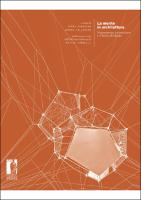La mente in architettura
Neuroscienze, incarnazione e il futuro del design
| dc.contributor.editor | Robinson, Sarah | |
| dc.contributor.editor | Pallasmaa, Juhani | |
| dc.contributor.editor | Zambelli, Matteo | |
| dc.date.accessioned | 2022-05-31T10:38:11Z | |
| dc.date.available | 2022-05-31T10:38:11Z | |
| dc.date.issued | 2021 | |
| dc.identifier | ONIX_20220531_9788855182867_997 | |
| dc.identifier | OCN: 1346807929 | |
| dc.identifier.uri | https://library.oapen.org/handle/20.500.12657/55713 | |
| dc.language | Italian | |
| dc.relation.ispartofseries | Ricerche. Architettura, Pianificazione, Paesaggio, Design | |
| dc.subject.other | senses | |
| dc.subject.other | apticity | |
| dc.subject.other | psychology of perception | |
| dc.subject.other | mirror neurons | |
| dc.subject.other | meaning in architecture | |
| dc.subject.other | embodied simulation | |
| dc.title | La mente in architettura | |
| dc.title.alternative | Neuroscienze, incarnazione e il futuro del design | |
| dc.type | book | |
| oapen.abstract.otherlanguage | Although we spend more than ninety percent of our lives inside buildings, we understand very little about how the built environment affects our behavior, thoughts, emotions, and well-being. We are biological beings whose senses and neural systems have developed over millions of years; it stands to reason that research in the life sciences, particularly neuroscience, can offer compelling insights into the ways our buildings shape our interactions with the world. In Mind in Architecture, leading thinkers from architecture and other disciplines, including neuroscience, cognitive science, psychiatry, and philosophy, explore what architecture and neuroscience can learn from each other. | |
| oapen.identifier.doi | 10.36253/978-88-5518-286-7 | |
| oapen.relation.isPublishedBy | bf65d21a-78e5-4ba2-983a-dbfa90962870 | |
| oapen.relation.isbn | 9788855182867 | |
| oapen.relation.isbn | 9788855182850 | |
| oapen.relation.isbn | 9788855182874 | |
| oapen.series.number | 6 | |
| oapen.pages | 240 | |
| oapen.place.publication | Florence |

